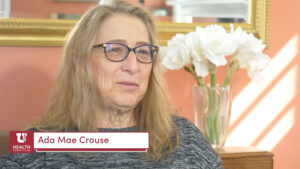Racial disparities among essential workers could be a key reason that Black Americans are more likely than whites to contract and die of COVID-19, according to researchers at the University of Utah. They found that Blacks disproportionately worked in nine vital occupations that increase their exposure to SARs-CoV-2, the virus that causes COVID-19.
“There are a lot of theories why Blacks are dying at higher rates than other races during this pandemic,” says Fares Qeadan, a U of U Health biostatistician and senior author of the study. “However, our descriptive study strongly suggests that Blacks are not dying from COVID-19 because they are genetically more susceptible, have more comorbidities, or aren’t taking the necessary precautions. Instead, it’s likely because they are working in jobs where they have a greater risk of coming in contact with the virus day in and day out.”
The study appears in a special issue of World Medical & Health Policy.
After analyzing demographic job data, the researchers found that Blacks were nearly three times more likely than whites to work in health care support jobs such as nursing assistants or orderlies. Blacks were twice as likely to work in transportation roles such as bus drivers, movers and taxi drivers. Also, Black Americans were more likely to serve in seven other occupations deemed essential during the pandemic: food preparation, building and grounds maintenance, police and protective services, personal care (child care, hairstylists), office and administrative support, production (assemblers, painters, machinists), as well as social work and community services.
The researchers correlated these job classifications with COVID-19 deaths in 26 states and Washington, D.C. They concluded that all of these jobs placed workers at higher risk of infection and death from the novel disease. Police and protective services, health care support, transportation and food preparation were among those occupations most closely correlated with COVID-19 deaths.
This finding, Qeadan says, strongly implies that Blacks are more likely to be exposed to COVID-19 on the job than whites. It also could help explain why Blacks, who only represent 6% of the population in Wisconsin, accounted for more than 36% of the state’s COVID-19 deaths. Smaller but notably disproportionate COVID-19 death rates were found in other states such as California, New York, New Jersey and Tennessee. However, the largest disparities were detected in the Midwest, where Blacks accounted for 30-40% of COVID-19 deaths in Kansas, Missouri, Michigan and Illinois yet represented less than 15% of the populations in these states. At the time of the study in April 2020, Blacks comprise 12% of the population nationwide but 21% of COVID-19 deaths.
“I find it ironic that the people we depend on as essential workers to wipe down our counters and keep things clean are the most vulnerable among us,” says Tiana N. Rogers, the corresponding author of the study and program manager for the Sorenson Impact Center’s Data, Policy, and Performance Innovation team in the David Eccles School of Business. “We need to make sure that the people doing these jobs can continue to provide for their families without having to risk their lives.”
According to study co-author, Charles R. Rogers, an assistant professor of public health, “Black essential workers could be bringing the disease home from work and inadvertently spreading it among their family members—especially considering some Blacks live in multi-generational, high-density housing.”
While this may make social distancing and other COVID-19 safety precautions more difficult, he says adhering to these guidelines is particularly important for essential workers in these situations.
Among its limitations, the study did not account for racial differences at the county or regional level within states due to a lack of access to public and desegregated data. The study’s results could also have been affected by the timing of the onset of COVID-19 in various states as well as how rapidly states adopted social distancing policies. Still, the researchers believe their findings are critical for enabling timely public health strategies for pandemics moving forward.
“This study should help health practitioners better assess what is going on among essential workers who happen to be Black,” Tiana Rogers says. “If we honestly don’t know what is happening and where it is happening, we can’t make adjustments that are equitable and give these workers the support and resources they need for survival during this crisis.”
Find original post here.
In addition to Tiana N. Rogers, Charles R. Rogers and Fares Qeadan, contributors to this study included Lily Y. Gu and Bin Yan of the University of Utah Medical School as well as Elizabeth VanSant-Webb of the University of Utah Sorensen Impact Center. This study was partially supported by the National Cancer Institute [grant K01CA234319] of the National Institutes of Health (NIH).





